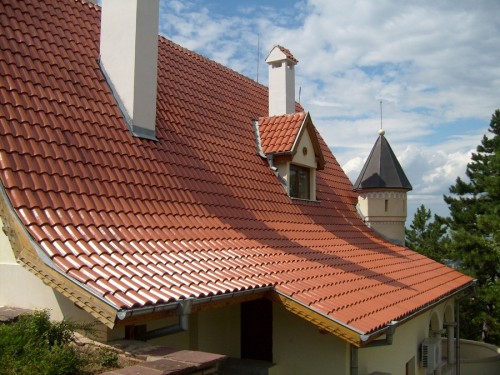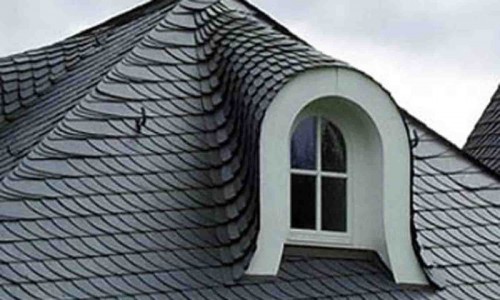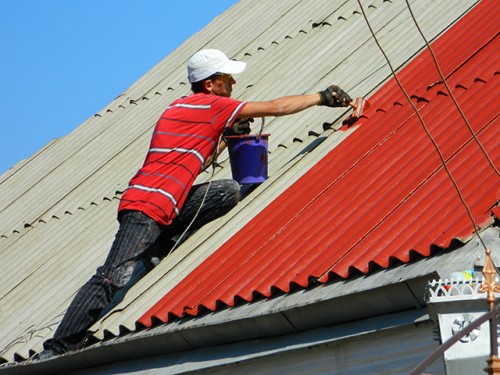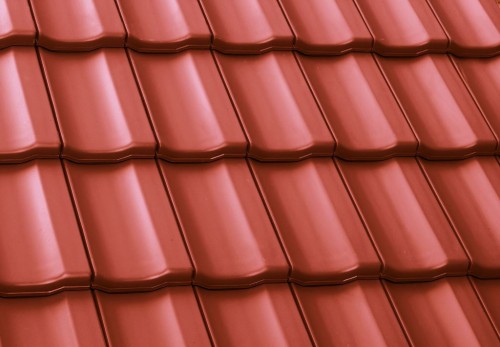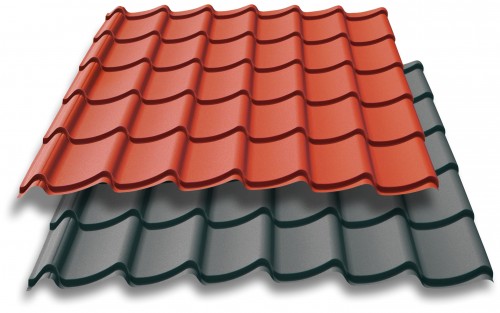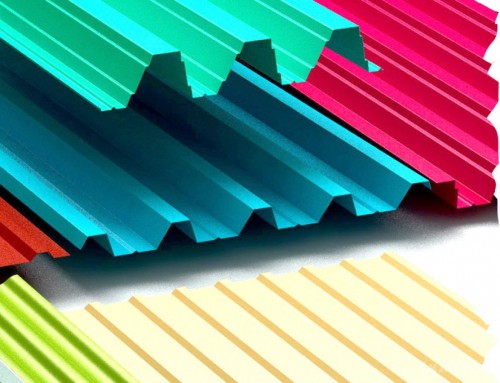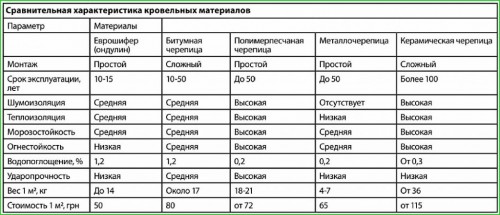
Review of Roofing Materials - Modern Roofing Materials Construction,Building materials
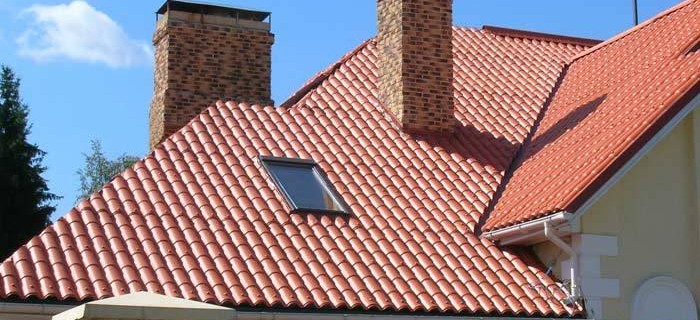
The roof of the cottage not only protects the house from the weather whims, but also completes the architectural appearance of the building. Reliable roof will provide durability at home and keep warm in it. Roofing material for the roof should be lightweight, moistureproof and not support the burning. Easy installation will speed up the timing of the work.
What roofing materials to buy for your home are beautiful, cheap or durable? It is desirable that the material combined all these qualities. An overview of modern materials for the roof will help you decide with the choice.
The materials for the roof roof differ in the material from which they are made, configurations and sizes.
Content
Classification of roofing materials in composition
Organic
Basic organic materials are bituminous and polymeric. Straw and duch also refers to this group, but in Russia such coatings are not used. Bituminous materials are destroyed and rapidly agrees under the influence of UV rays. Well support burning. Service life from 5 to 25 years.
Mineral
Mineral materials include:
- slate tile from a mountain slate;
- ceramic tile;
- cement-sand tile;
- asbestos-cement sheets - slate. Made from short-fiber asbestos and portland cement. The basis is the cement, asbestos fibers serve as a filler and help create a reinforcing mesh that increases material strength and resistance to mechanical damage.
Mineral materials have a longer service life than organic. Not susceptible to rot. Do not flamm. Credited in the process of cycle defrosting-thawing. Especially sensitive to the discharge difference slate and ceramic tile. These materials absorb moisture. When freezing the particle of water crystallizes and eventually destroy the structure of the material.
Metal
Sheet materials from copper, zinc, galvanized steel. The term of galvanized steel from 30 to 50 years. The zinc and copper roof is practically not destroyed, but have a very greater cost.
Not every owner is interested, from which roofing materials are made. Basically pay attention to the appearance of the material and its technical characteristics.
Classification of roofing materials in appearance and size
Sheetworks
- metal tile, ondulin, slate, smooth or profiled metal sheets;
- bituminous fibrous sheets are sheets of synthetic fibers impregnated with bitumen;
- asbestos-cement sheets - slate;
- polyvinyl chloride sheets - color polymer slate. Also often referred to euroshofer.
Soft roofing materials
The soft roofing materials include not only the materials for the top coating of the roof, but also waterproofing materials such as a cardboard basis - metalism, pholoisol.
- Rolled roofing materials from bituminous and polymer components on a nonwoven-based - polyester or fiberglass is glassobitis, hydrokhotloizol.
- Bituminous - Polymer coatings based on glass cholester - Izoflex, TechnoNikol.
- Single-layer rubber-based materials.
Piece materials of small sizes
Such materials include elements, in size not exceeding 1 m². This tile, soft tile, slate, natural slate.
Convenient for roofs with a big slope.
Mastiki
Bituminous and polymeric mastic are applied to the roofs of any design. After hardening, form a solid film. Apply both for new coatings and for repairing the old roof without dismantling it.
Characteristics, advantages and disadvantages of the most popular roofing materials.
A complete list of all names and types of roofing materials will take a lot of space, so consider the most popular materials.
Asbestos cement plates
Asbestos cement plates are presented in the form of a schifer friend. Slate has a long service life under the right operating conditions. Material is relatively fragile. It can split when installing or subsequent roof repair. Compared to other types of roofing materials, the price of slate is the lowest.
Slate has various modifications that differ in the quality of the profile. The profile is the usual, reinforced and unified. The view of the profile is indicated in the slate marking.
- Wavy slate common profile. Rectangular sheets have a size of 1200x800x5, 5 mm. Weight 9 kg. It is used to cover the skate, endands and protection of parts protruding over the roofs - pipes and auditory windows.
- Wu - wavy slate reinforced profile. Size 1750x800 -6 mm and 2000x800x8 mm. Such slate is used to fully cover the roof. Mounted on a metal or wooden crate.
- WC - Wavy slate unified profile. It has medium sizes between both Wu.
Slate sheets laid overlabs in the direction from the cornice to the skate. The upper sheet must overlap the lower on 2-mm mm. For mounting, nails and screws are used using sealing gaskets that prevent moisture penetration.
The advantages of slate:
- low cost;
- does not support combustion.
Disadvantages:
- the need for a skate device at least 15º;
- atmospheric instability;
- fragility.
To extend the life and giving a beautiful appearance, slate is painted with silicate paints using pigments.
Natural tile
The roof covered with genuine tiles looks rich.
The disadvantage is a lot of weight and high cost of material. Using natural tiles as roofing material should be planned in advance. It is necessary to increase the carrying capacity of the roof design. This requires additional costs. The material is fragile, often comes in disrepair already when mounting. More often used for household buildings.
Shale tile
The shale tile is made of natural stone having a layered structure. Fucked on a wooden crate with special nails.
Advantages:
- due to the small sizes of the tiles are convenient for coating the roofs of a complex design;
- easily cut and processed;
- due to high density, there is a low level of water absorption;
- it is not affected by the temperature differences, does not change color over time;
- in durability exceeds all roofing materials;
- the roof made of shale tile combines high strength with flexibility and elasticity.
Disadvantages:
- the high weight of the tile requires the enhancement of the roof design;
- monotony of colors;
- high price.
Metal tile.
The appearance of the metal tile, which has the name of the composite tile, resembles natural tile. The material has a small weight compared to genuine tiles and is convenient in the montage.
It is a leaf of galvanized steel with an applied polymer coating. Sheet thickness from 0, 4 to 0, 6 mm.
Advantages:
- low weight;
- mounting lightness:
- variety of colors;
- relatively low cost;
- durability;
- the smooth surface prevents the snow delay on the roof.
Disadvantages - requires additional noise insulation.
Online store roofing materials Your roof - Metal tile for pasture price.
Professor
Professor - These are sheets of galvanized steel with a polymer coating with dimensions of 1050-1200 x 1000-1100 mm. It has a different profile height from 8 to 35 mm. In addition to galvanized steel, professional flooring can be from ferrous metal (steel) or color (copper, aluminum).
When choosing a corrugated floor, pay attention to the type of coating. Zinc coating protects metal from destruction. The polymer coating creates a color protective film. Polyester coating has good qualities.
Advantages:
- ease of installation;
- low weight;
- durability;
- zero water absorption;
- large selection of color scheme;
- fire resistance.
Disadvantages:
- low sound insulation;
- the possibility of condensate formation.
Ondulin, euroshofer
Bituminous fibrous sheets are sheets of synthetic or natural fibers impregnated with bitumen. In appearance and the form of Ondulin reminds Slate. The cost exceeds the usual slate, but the price of Ontulina is justified by a number of benefits:
- low weight;
- due to the elasticity, it withstands the snow load to 300 kg m²;
- easily reproduced and does not break when mounting;
- high sound absorbing indicators.
Ruberoid
Refers to soft bituminous roofing materials. Special mastic applies for laying. The bias of the roof does not matter. Service life - from 5 to 7 years.
Disadvantages:
- low frost resistance;
- sensitivity to drops of temperature and UV rays;
- requires frequent replacement or permanent repair.
Advantages.
The only advantage of the runneroid is the low price. If you consider a short service life of such a coating and calculate the cost of repairing the roof repair, then in 10 years of operation, ultimately the cost of such a roof will increase several times.
Metallosezol and pholoisol are superior to the rubberoid for durability due to the presence with the material of the foil layer. Ruberoid is used mainly to cover garages and household buildings.
Bituminous roofing coatings
According to the method of installation, bituminous and bitumen-polymer rolled coatings are the flooding materials. Used to cover flat roofs, or having a slope of not more than 25 °.
1. The most famous - Rubext, glassobit, Rovers.
- The panels are laid by the method of moving on a concrete or metal base in several layers.
- Materials are not susceptible to rotting, resistant to atmospheric phenomena, have high mechanical strength.
2. Good indicators have a rolled material Dneproflex based on fiberglass with an elastic coating.
Depending on the modification, used for the upper and for the bottom layer of the roof. Requires laying in 2 layers. Durable - service life up to 25 years.
3. Based on polyester canvas or glass cholester, bitumen-polymeric materials of Isophiles, TechnoNikol, Ikopal are produced. From above, the material is covered with coarse sprinkle. The lower part is protected by a polyethylene film. Advantages:
- waterproof;
- flexibility;
- high strength and beautiful view due to stone scaly sprinkle;
- due to high resistance to atmospheric influences can be used in regions with any climate.
The comparative table will help you in choosing a suitable roofing material.
Recommended slope for different types of roof
- slate - 15-60 °:
- metal tile 15 °
- ceramic tile 30-60º
- ondulin, EuroShorter - from 5 °
- ruberoid 4-30 °
- asbestos cement 27-50 °
- steel 16-30 °




